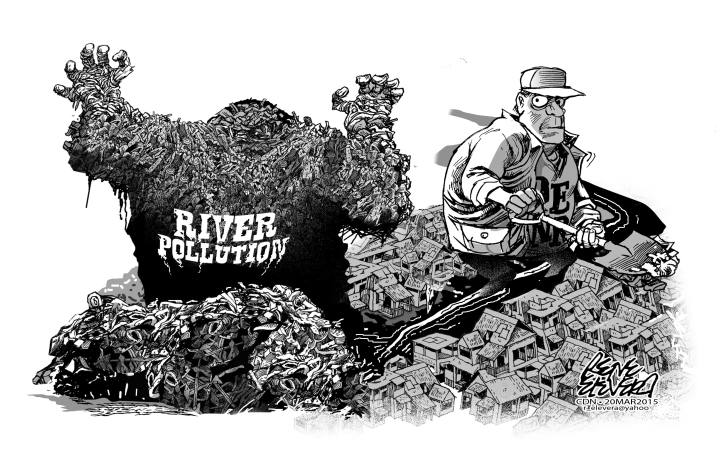
One of the milestones in modern environmentalism was the publication of Silent Spring written by Rachel Carson in 1962.
The book documents the effects of insecticides like DDT, especially on birds. In the western hemisphere, trees bloom in the spring, attracting birds. It is a season many look forward to after a dark, cold winter.
With the widespread use of pesticides, Carson called attention to what was being taken for granted.
“The most alarming of all man’s assaults upon the environment is the contamination of air, earth, rivers, and sea with dangerous and even lethal materials,” she wrote.
March 16 to 27 has been declared Philippine Water Weeks by the Department of Environment and Natural Resources (DENR).
March 22 is declared World Water Day by the United Nations.
Water is life. Rivers are arteries for this lifeblood.
Historically, human settlements were established along bodies of water, riverbanks and the coast.
Metro Cebu has four strategically located rivers, Guadalupe River in the south, Lahug/Busay River, Mahiga River and Butuanon River. Some of these rivers used to be navigable. Communities flourished by them.
There were other waterways that played important roles as drainage like the Tagunol Waterway and the Parian Estero.
Population pressure and careless urbanization has cause their serious deterioration.
Today, as aptly diagnosed by the Movement for a Livable Cebu (MLC), these waterways have become sources of stench; useless drainage for floods; threats to the health of residents because of increasing fecal coliform, among others; regular garbage dumps; and unsightly and embarrassing parts of the city.
Unlike the birds in Carson’s book, these waterways are not actually silent. They spring to action during heavy rains, causing flashfloods in communities.
Despite the increasing incidents of urban flooding, the response to the problem has been band-aids like stop-and-start dredging, and a growing cynicism that government is all to blame and can never fix it.
The solution will require a stronger role by citizens not to accept the status quo.
Groups like the Movement for a Liveable Cebu and like-minded partners will start anew to give voice to the waterways we have long abused.
The campaign “Syagit sa Sapa” is a fresh start to raise public awarenesss and get both government agents and civil society to act.
A novel “bike and walk” tour of the Parian Esteros in downtown Cebu city on Sunday, March 22, is unfolding back-to-back with the Environmental Management Bureau-7 (EMB-7) spearheading river clean-up activities on Saturday.
The time for talk was yesterday.
If it means, starting reforms on your feet or on a bike to get more people involved, by all means let’s go fo it.

